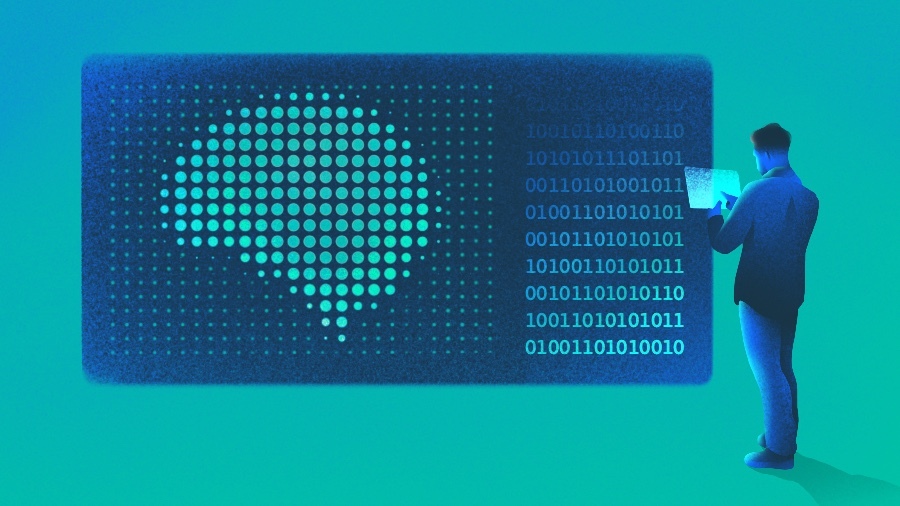Nvidia is preparing to launch a new product which perfectly embodies its new specialization in artificial intelligence: here is the DGX Spark, a machine that the brand presents as a “personal AI supercomputer”.
We have been witnessing a veritable explosion of artificial intelligence for several years now. Since the spectacular emergence of ChatGPT, OpenAI’s major language model, all the tech titans have started to jostle for a place in the sun in this industry which now weighs several hundred billion dollars.
Currently, most of these next-generation tools still rely on massive cloud infrastructure; they are often hosted on servers full of specialized hardware, mainly designed by Nvidia.
The local AIxor
But at the same time, a new trend is emerging: that of the local AI, capable of running directly on user devices instead of relying on huge data centers. An initiative which can be explained by a growing desire to reduce dependence on the cloud – both to reduce the costs linked to this infrastructure, but also to make applications faster and autonomous, and to improve data confidentiality.
All industry leaders have taken note of this trend. OpenAI, Google, Meta, Anthropic and Mistral have all started to position themselves in this segment by developing new models that are much lighter and more efficient than their gigantic flagships. But at present, it is mainly a prophylactic approach, because the hardware side is still struggling to keep up with the pace imposed by these innovations on the software side.
Indeed, just a few years ago, mainstream smartphones and computers were simply not ready for this paradigm shift. Operating these large artificial neural networks requires carrying out a very large number of mathematical operations; however, this often represents a workload well beyond the capacities of conventional CPUs.
Since then, hardware giants have started to step into the breach. All the major chip manufacturers, from Apple to Intel via Qualcomm, Google and AMD, are in the process of converting to this new paradigm by integrating specialized NPU-type computing subunits or dedicated AI accelerators into their chips.
So it’s probably only a matter of time before our smartphones and computers are capable of running large AI models. But for now, these implementations still remain quite in its infancy, and far from being able to compete with specialized equipment.
A personal AI supercomputer
Nvidia understood this well and decided to jump at the opportunity with its new DGX Sparkwhich positions itself as the perfect intermediary between consumer hardware that is still very limited and the industry’s huge data centers, largely beyond the reach of individuals.
As its name suggests, the Spark inherits the DNA of the DGX platforms, supercomputer modules which are intended to be assembled by the hundreds to offer gigantic computing power to the giants of the industry. In essence, the Spark is a miniature version of this professional equipment that Nvidia previously reserved for data centers.
It features a 20-core ARM processor (10 Cortex-X925 and 10 Cortex-A725) and a Blackwell GPU with 5th generation Tensor cores, supported by 128 GB of high-bandwidth LPDDR5x unified memory (more than 270 GB/s), an NVMe M.2 SSD with automatic encryption and ultra-fast connectivity. According to Nvidia, it can deliver up to 1 petaflop of AI performance, or a million billion operations per second — enough to handle models of up to 200 billion parametersand even more than 400 billion when connecting two Spark units together.
Certainly, this is still insufficient to run the largest language models on the market like GPT-5, whose training and inference still require colossal infrastructure. But the Spark is still capable ofhandle models much heavier than any other consumer devicein a relatively compact chassis and priced around $3,000. An extremely attractive Price, considering that professional GPUs used in the industry sometimes sell for several tens of thousands of dollars per unit.
Spark could therefore become the tool of choice for many researchers, engineers and students in AI, with all that this implies for the future of this technology.
« In 2016, we built DGX-1 to give AI researchers their own supercomputer. I hand-delivered the first system to Elon (Musk), to a small start-up called OpenAI — and that’s where ChatGPT was born, which started the AI revolution “, recalls Jensen Huang, founder and CEO of Nvidia. “ DGX-1 ushered in the era of AI supercomputers and ushered in the laws of scalability that govern modern AI. With DGX Spark, we’re returning to that mission: putting an AI computer in the hands of every developer to spark the next wave of technological advancements. »
🟣 To not miss any news on the WorldOfSoftware, subscribe on Google News and on our WhatsApp. And if you love us, .












